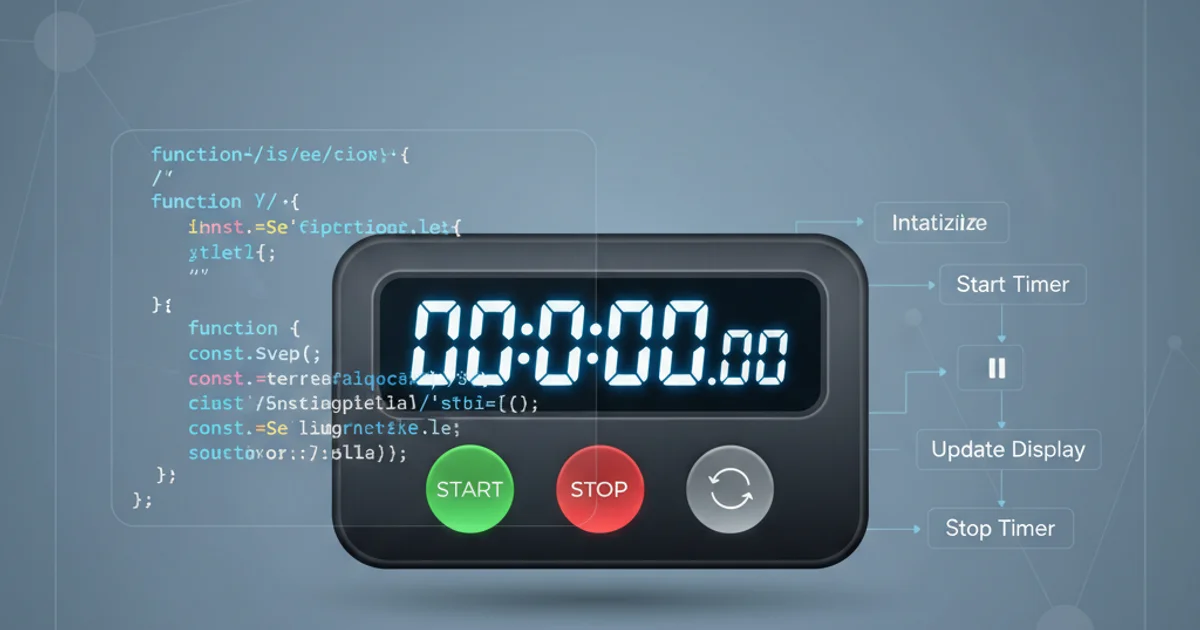Stack and Queue, Why?
Categories:
Stack and Queue: Understanding Fundamental Data Structures

Explore the core concepts, operations, and practical applications of Stack and Queue data structures, essential for any programmer.
In the world of computer science, data structures are fundamental tools that allow us to organize and store data efficiently. Among the most basic yet powerful are the Stack and the Queue. These linear data structures serve as building blocks for more complex algorithms and systems, each offering a unique approach to data management based on specific access patterns. Understanding their principles—Last-In, First-Out (LIFO) for Stacks and First-In, First-Out (FIFO) for Queues—is crucial for writing optimized and logical code.
The Stack: LIFO Principle in Action
A Stack is an abstract data type that follows the Last-In, First-Out (LIFO) principle. Imagine a stack of plates: you can only add a new plate to the top, and you can only remove the topmost plate. The last plate added is always the first one removed. This behavior makes stacks ideal for scenarios where the order of operations is critical, such as managing function calls, undo/redo features, or parsing expressions.
flowchart TD
subgraph Stack Operations
A[Push (Add to Top)] --> B(Top of Stack)
B --> C[Pop (Remove from Top)]
end
D[Element 1] --> E[Element 2] --> F[Element 3 (Top)]
F -- Push(Element 4) --> G[Element 4 (New Top)]
G -- Pop() --> FVisualizing Stack operations: Push adds to the top, Pop removes from the top (LIFO).
The primary operations associated with a Stack are:
- Push: Adds an element to the top of the stack.
- Pop: Removes the topmost element from the stack and returns it.
- Peek/Top: Returns the topmost element without removing it.
- isEmpty: Checks if the stack contains any elements.
- size: Returns the number of elements in the stack.
class Stack:
def __init__(self):
self.items = []
def push(self, item):
self.items.append(item)
def pop(self):
if not self.is_empty():
return self.items.pop()
return None # Or raise an error
def peek(self):
if not self.is_empty():
return self.items[-1]
return None
def is_empty(self):
return len(self.items) == 0
def size(self):
return len(self.items)
# Example Usage:
my_stack = Stack()
my_stack.push(10)
my_stack.push(20)
print(f"Stack top: {my_stack.peek()}") # Output: Stack top: 20
my_stack.pop()
print(f"Stack size: {my_stack.size()}") # Output: Stack size: 1
The Queue: FIFO Principle for Ordered Processing
In contrast to a Stack, a Queue is an abstract data type that adheres to the First-In, First-Out (FIFO) principle. Think of a line at a grocery store: the first person to join the line is the first person to be served. Similarly, in a queue data structure, the first element added is always the first one to be removed. This makes queues perfect for managing tasks that need to be processed in the order they arrive, such as print job scheduling, breadth-first search algorithms, or handling requests in a web server.
flowchart LR
subgraph Queue Operations
A[Enqueue (Add to Rear)] --> B(Rear of Queue)
C(Front of Queue) --> D[Dequeue (Remove from Front)]
end
E[Element 1 (Front)] --> F[Element 2] --> G[Element 3 (Rear)]
G -- Enqueue(Element 4) --> H[Element 4 (New Rear)]
E -- Dequeue() --> FVisualizing Queue operations: Enqueue adds to the rear, Dequeue removes from the front (FIFO).
The primary operations for a Queue are:
- Enqueue: Adds an element to the rear (or back) of the queue.
- Dequeue: Removes the front element from the queue and returns it.
- Front/Peek: Returns the front element without removing it.
- isEmpty: Checks if the queue contains any elements.
- size: Returns the number of elements in the queue.
from collections import deque
class Queue:
def __init__(self):
self.items = deque()
def enqueue(self, item):
self.items.append(item)
def dequeue(self):
if not self.is_empty():
return self.items.popleft()
return None # Or raise an error
def front(self):
if not self.is_empty():
return self.items[0]
return None
def is_empty(self):
return len(self.items) == 0
def size(self):
return len(self.items)
# Example Usage:
my_queue = Queue()
my_queue.enqueue("Task A")
my_queue.enqueue("Task B")
print(f"Queue front: {my_queue.front()}") # Output: Queue front: Task A
my_queue.dequeue()
print(f"Queue size: {my_queue.size()}") # Output: Queue size: 1
pop(0) can be inefficient for large queues due to the need to shift all subsequent elements. Using collections.deque (double-ended queue) is generally preferred for efficient queue operations.Why Use Stacks and Queues?
The choice between a stack and a queue depends entirely on the problem you're trying to solve and the order in which you need to process data. Their simplicity and well-defined access patterns make them incredibly versatile.
Common Use Cases for Stacks:
- Function Call Management: The call stack in programming languages uses a stack to keep track of active function calls. When a function is called, it's pushed onto the stack; when it returns, it's popped off.
- Undo/Redo Functionality: Text editors and graphic design software use stacks to store states, allowing users to revert or reapply actions.
- Expression Evaluation: Compilers use stacks to evaluate arithmetic expressions (e.g., converting infix to postfix notation).
- Backtracking Algorithms: Algorithms like depth-first search (DFS) implicitly or explicitly use a stack to manage paths.
Common Use Cases for Queues:
- Task Scheduling: Operating systems use queues to manage processes waiting for CPU time or I/O operations.
- Print Spooling: Documents sent to a printer are typically placed in a queue to be printed in the order they were received.
- Breadth-First Search (BFS): This graph traversal algorithm uses a queue to explore nodes level by level.
- Buffering: Data streams often use queues to temporarily store data before it's processed, ensuring smooth flow despite varying processing speeds.
By understanding the fundamental differences and applications of Stacks and Queues, you gain powerful tools for designing efficient and robust software solutions. They are not just theoretical concepts but practical workhorses in everyday programming.